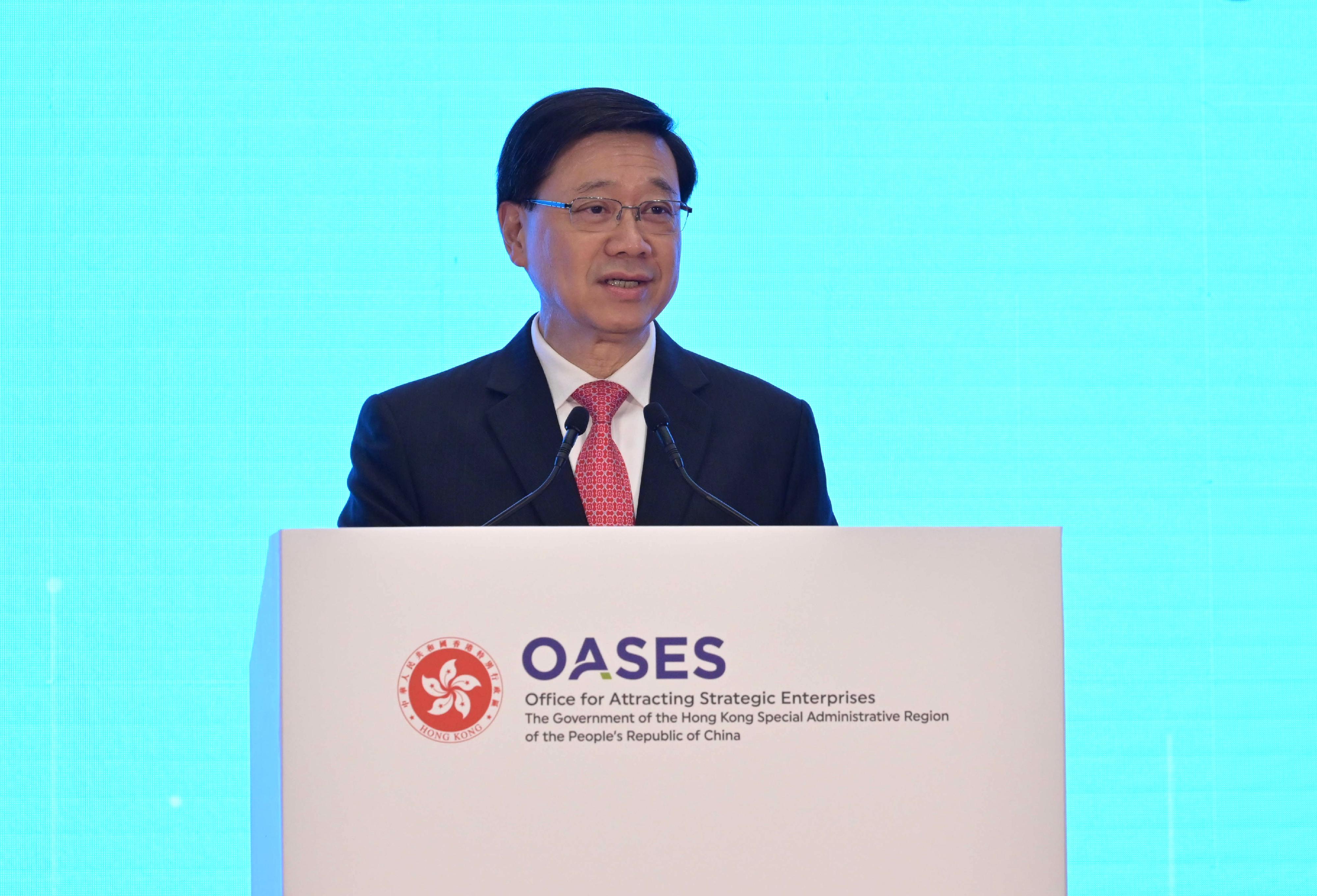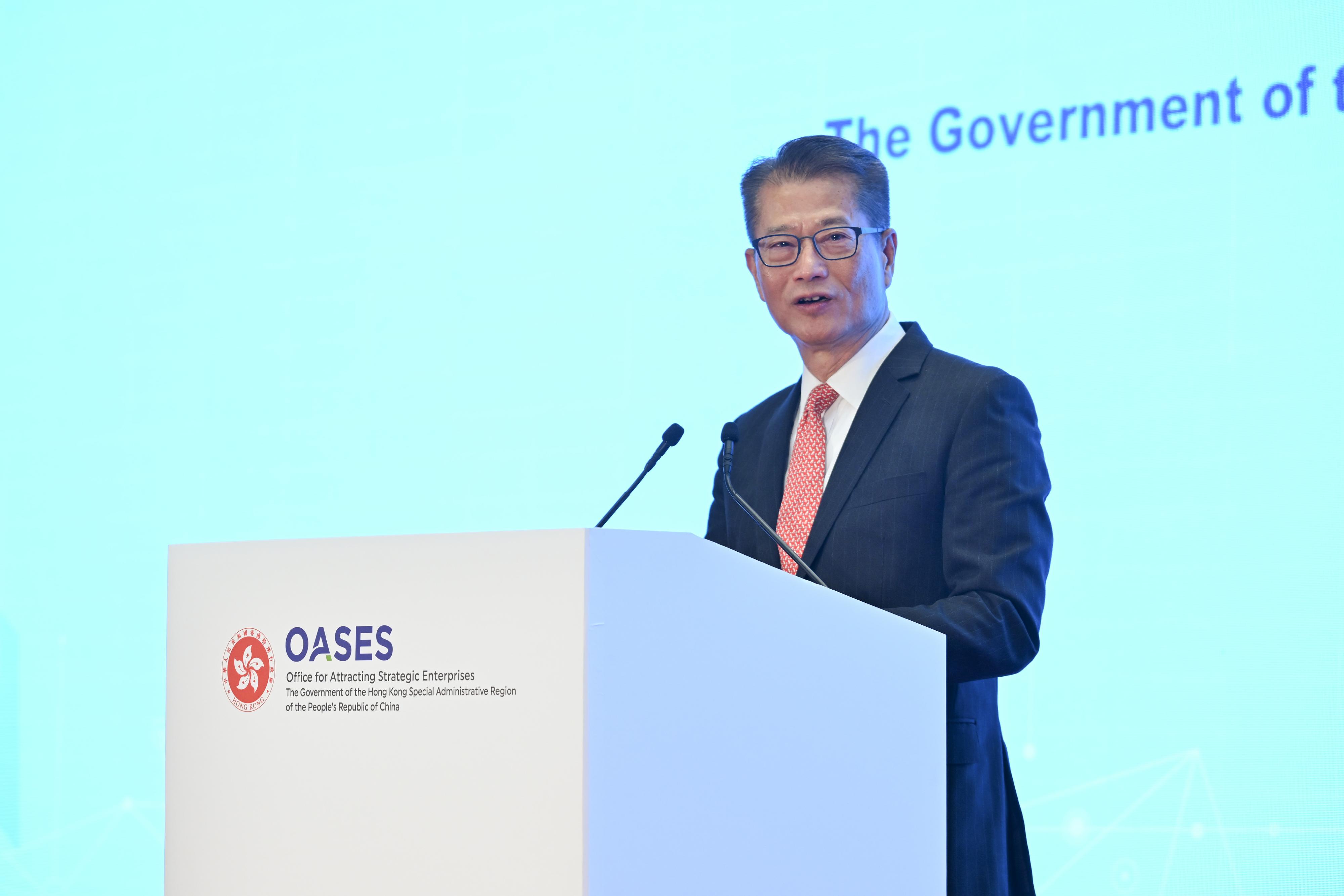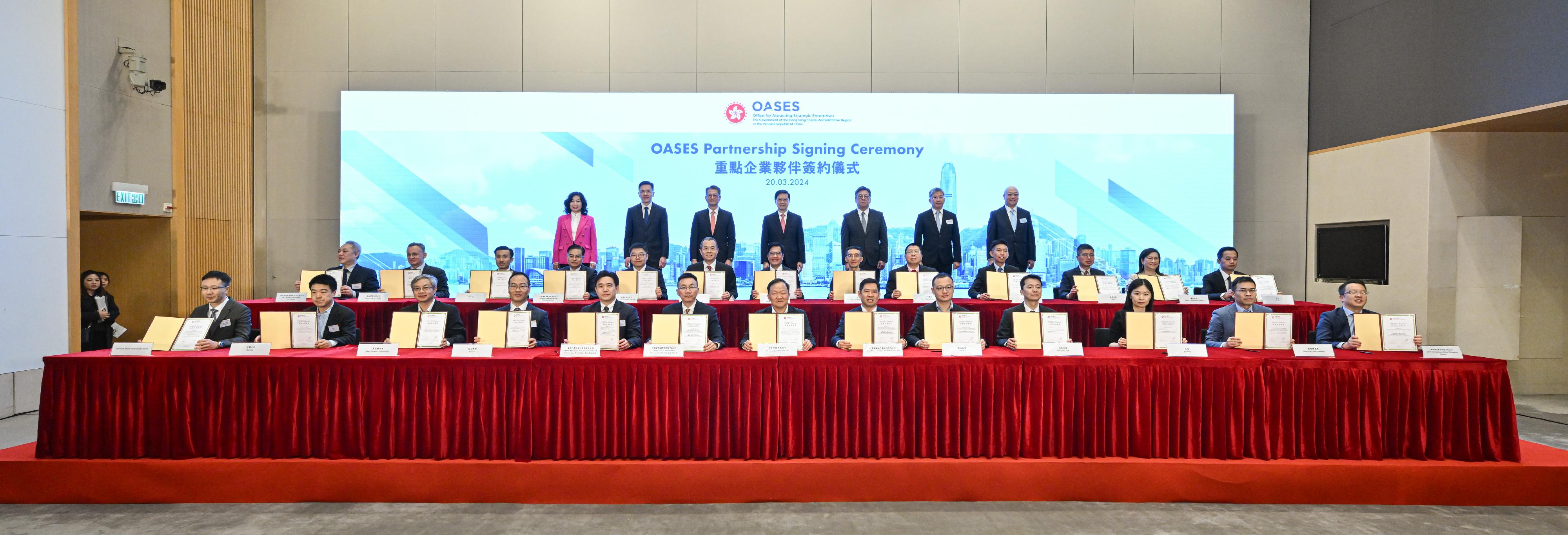The Office for Attracting Strategic Enterprises (OASES) held the OASES Partnership Signing Ceremony today (March 20) and welcomed a new batch of strategic enterprises to set up or expand their businesses in Hong Kong. Most of them will set up research and development (R&D) centres or regional business headquarters in Hong Kong.
Witnessed by the Chief Executive, Mr John Lee, and the Financial Secretary, Mr Paul Chan, 25 strategic enterprises signed agreements to become strategic enterprise partners of the Hong Kong Special Administrative Region Government. In addition to investing in Hong Kong, they will actively bring in upstream, midstream and downstream partners from their industry chains to the city, thereby promoting a more vibrant development of the innovation and technology sector.
The 25 strategic enterprises (see Annex) include 19 enterprises from the second batch of enterprises attracted as well as six enterprises from the first batch which were unable to join the Launching Ceremony of OASES Partnership last October due to scheduling reasons. They come from such industries as life and health technology, artificial intelligence and data science, fintech, and advanced manufacturing and new energy. Among them, six enterprises are from the United States, and the rest are from the Mainland.
In the coming years, the strategic enterprises, including the first batch of strategic enterprises attracted earlier, will invest more than $40 billion in total in Hong Kong, and create over 13 000 jobs, the majority of which would be scientific research and management positions.
In his speech at the ceremony, Mr Lee said he has every confidence that the strategic enterprises would continue to thrive in Hong Kong. "Hong Kong is the only city in the world that converges both the China advantage and the global advantage, under the 'one country, two systems' principle."
"Given our long-standing strengths in finance, intellectual property protection and connectivity, Hong Kong can enable technology transfer, attract foreign investment and create the cross-boundary collaborations that drive innovation and technology," Mr Lee said.
Addressing the ceremony, Mr Chan said that under the principle of "one country, two systems", Hong Kong maintains the rule of law, a free and open business environment, free flow of capital, data and talent, as well as seamless alignment with best international governance standards. With a comprehensive and sophisticated financial eco-system, world-class academic and research institutions and their strong R&D capabilities, Hong Kong is an ideal location for strategic enterprises to expand their businesses. He also said that the Government will continue to support R&D to drive the commercialisation of research outcomes and promote new industrialisation, nurture local start-ups and talent, and boost the collaboration with sister cities in the Greater Bay Area with a view to cultivating a more thriving innovation and technology ecosystem.
The signing ceremony today was attended by over 200 representatives of the strategic enterprises, local and foreign chambers of commerce, research institutions, relevant government bureaux/departments, and public organisations.
The Chief Executive announced in his Policy Address last year that the Government will continue its endeavours to attract enterprises, particularly those pertinent to Hong Kong's development as the "eight centres", including key enterprises and leading representatives in advanced technology, innovation and strategic industries. OASES aims to reach out to no less than 300 strategic enterprises in 2024 to negotiate for establishing their foothold or expanding their operations in Hong Kong. According to the 2024-25 Budget, OASES, the Innovation, Technology and Industry Bureau, Invest Hong Kong and the Hong Kong Investment Corporation Limited will actively reach out to enterprises from the Mainland and overseas, and proactively attract and assist high value‑added technology industries and other enterprises to establish a foothold in Hong Kong.
For enterprises interested in setting up their businesses in Hong Kong, OASES and other departments will engage them in detailed discussions on their business development plans and provide one-stop services to these enterprises. They will follow up on their development situations in Hong Kong and their needs.


